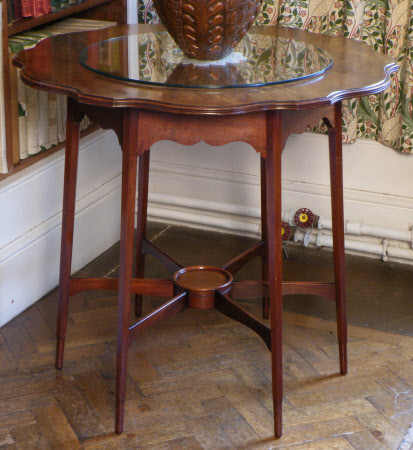Occasional table
Morris & Co.
Category
Furniture
Date
circa 1890
Materials
Mahogany
Measurements
68.5 cm (Height); 76 cm (Diameter)
Order this imageCollection
Standen House and Garden, West Sussex
NT 1214039
Caption
Acquired by the Grogans, this table was found by them on the pavement outside an antique shop in East Grinstead. In the late 1970s Arts & Crafts furniture and design were not appreciated as much as it is now and many pieces in the house were relatively inexpensive when bought.
Summary
A mahogany occasional or centre table, by Morris & Co., circa 1890. Designed by George Jack, the overhanging top of moulded undulating circular shape, with ogee-arched friezes and standing on six slender square tapering legs joined by stretchers in the form of spokes emanating from a circular disc.
Full description
George Jack (1855-1931), architect and designer, designed furniture for Morris & Co. from 1880, after working in the offices of Philip Webb. Founded in 1861 as Morris, Marshall, Faulkner & Co., the firm was soon referred to as Morris & Co., although the name was not officially adopted until 1875 when William Morris (1834-1896) became sole proprietor. Responsibility for the design of almost all commissioned furniture passed to Philip Webb, whose influence was enormous, and (from 1880) his assistant George Jack, while Morris produced designs for glass, tapestries and any painted furniture. From 1871 wallpapers, designed by Morris, became an important part of the business. Show rooms in Oxford Street were acquired in 1877. Greater commercial success in the 1880s led to the opening of a shop in Manchester in 1883. Some of the well-known interior schemes undertaken by Morris include Rounton Grange in Yorkshire, Old Swan House in Chelsea, Great Tangley Manor in Surrey, Wightwick Manor, Bullers Wood and Standen.
Makers and roles
Morris & Co., furniture manufacturer George Washington Jack (1855-1932), designer
